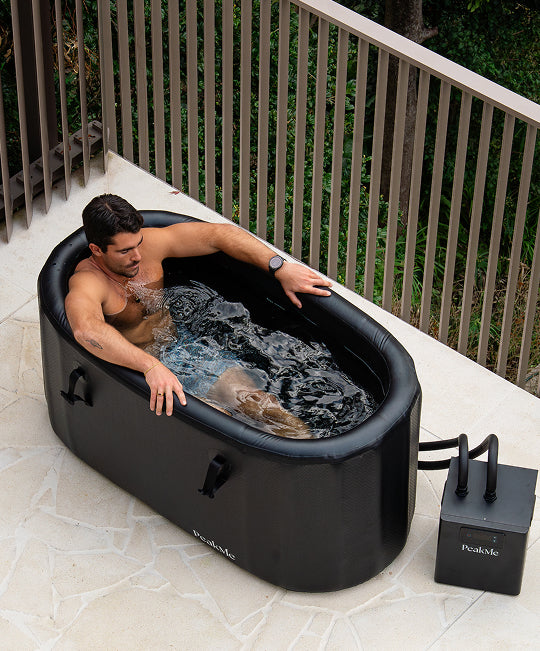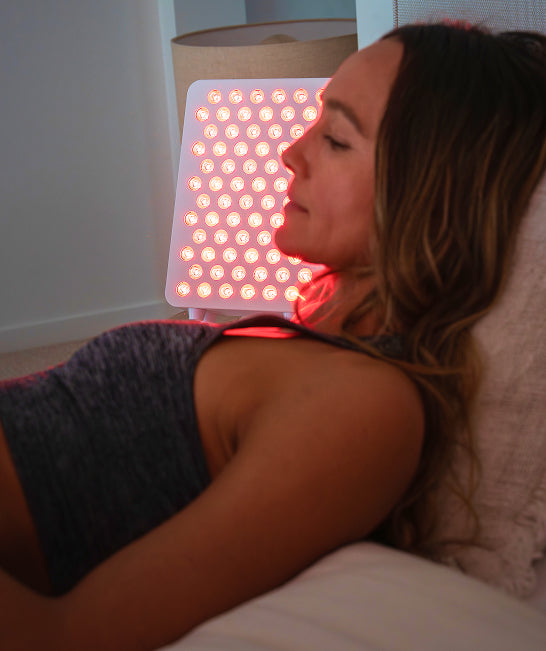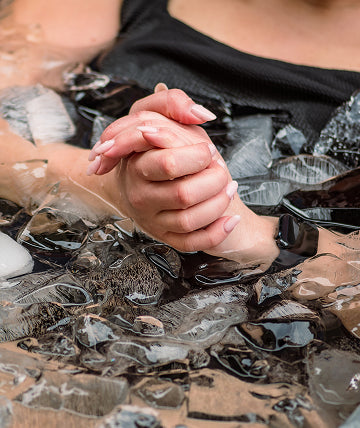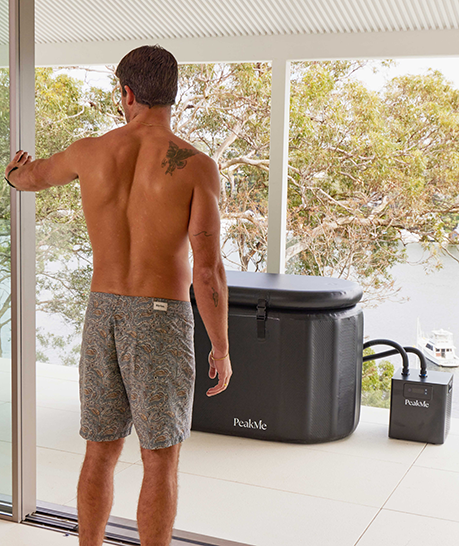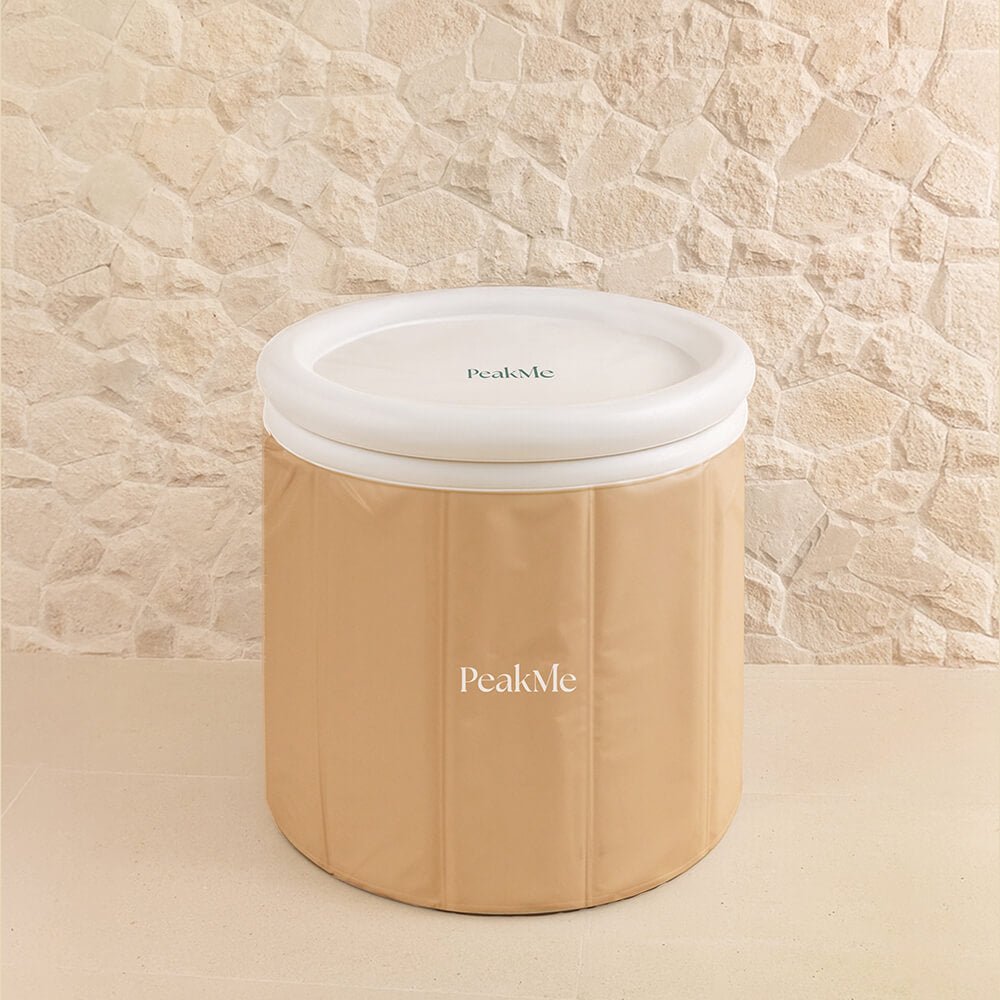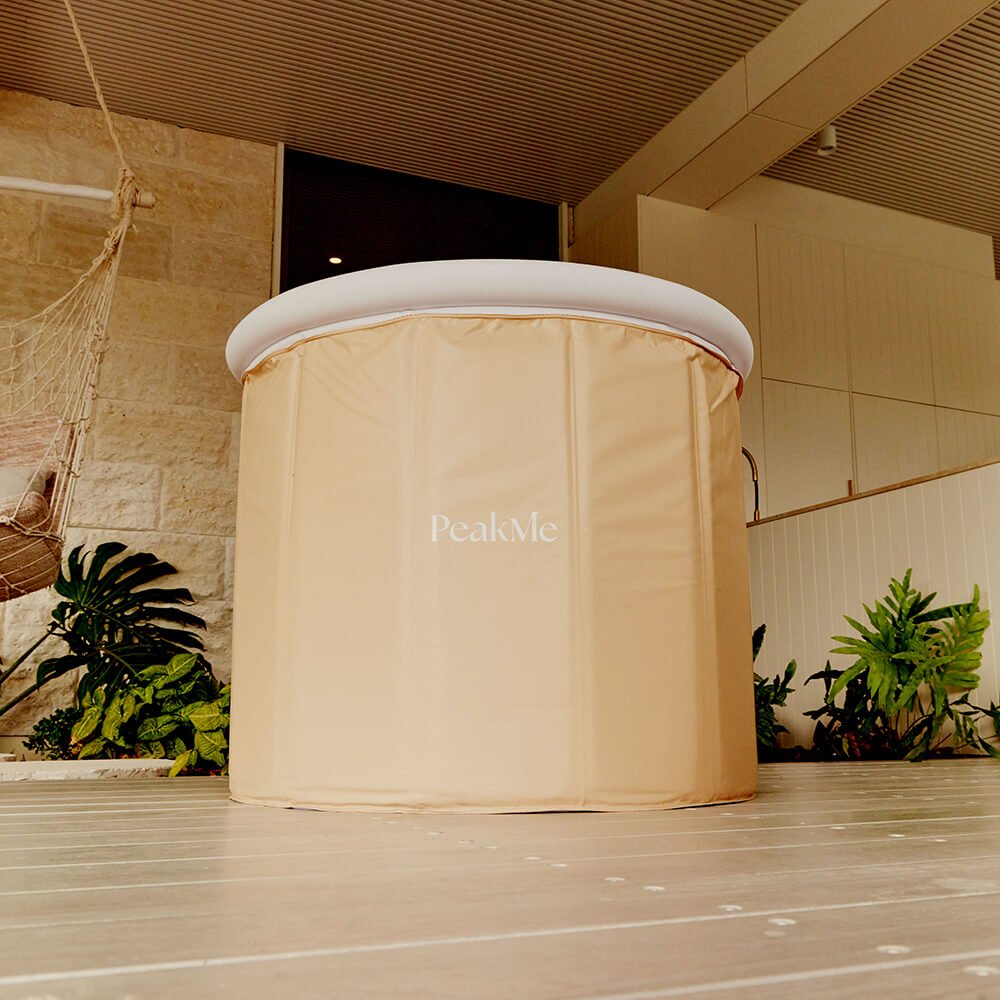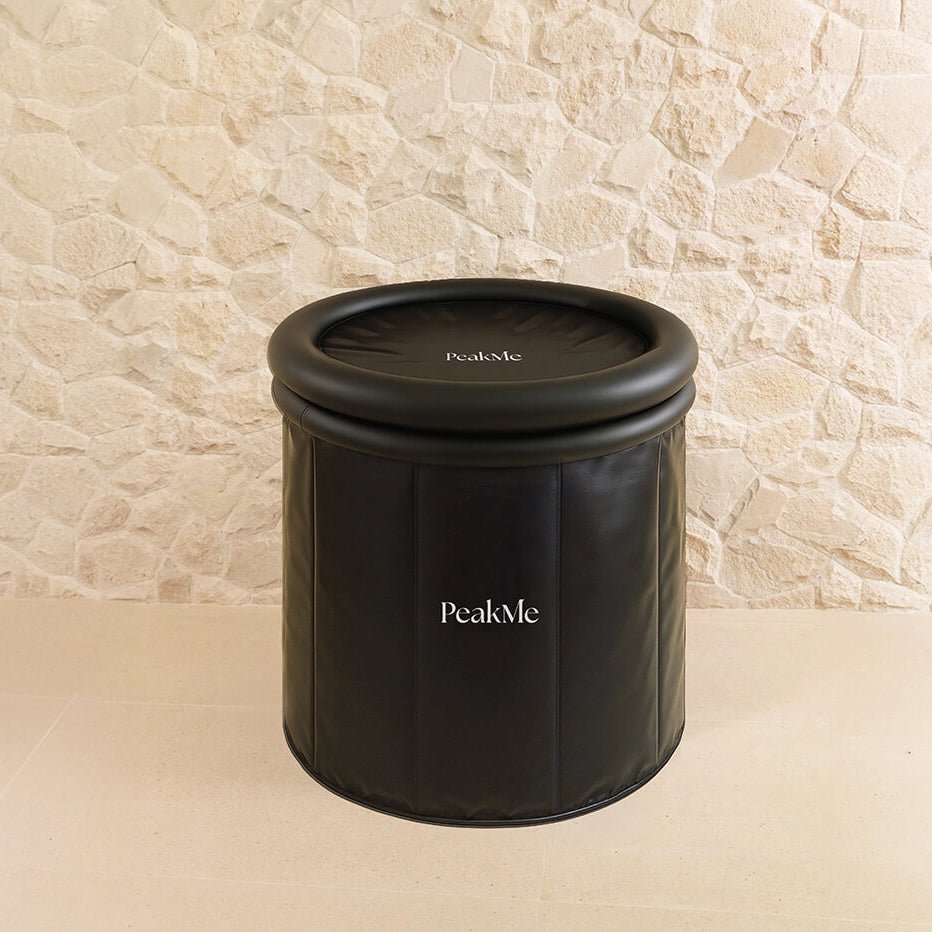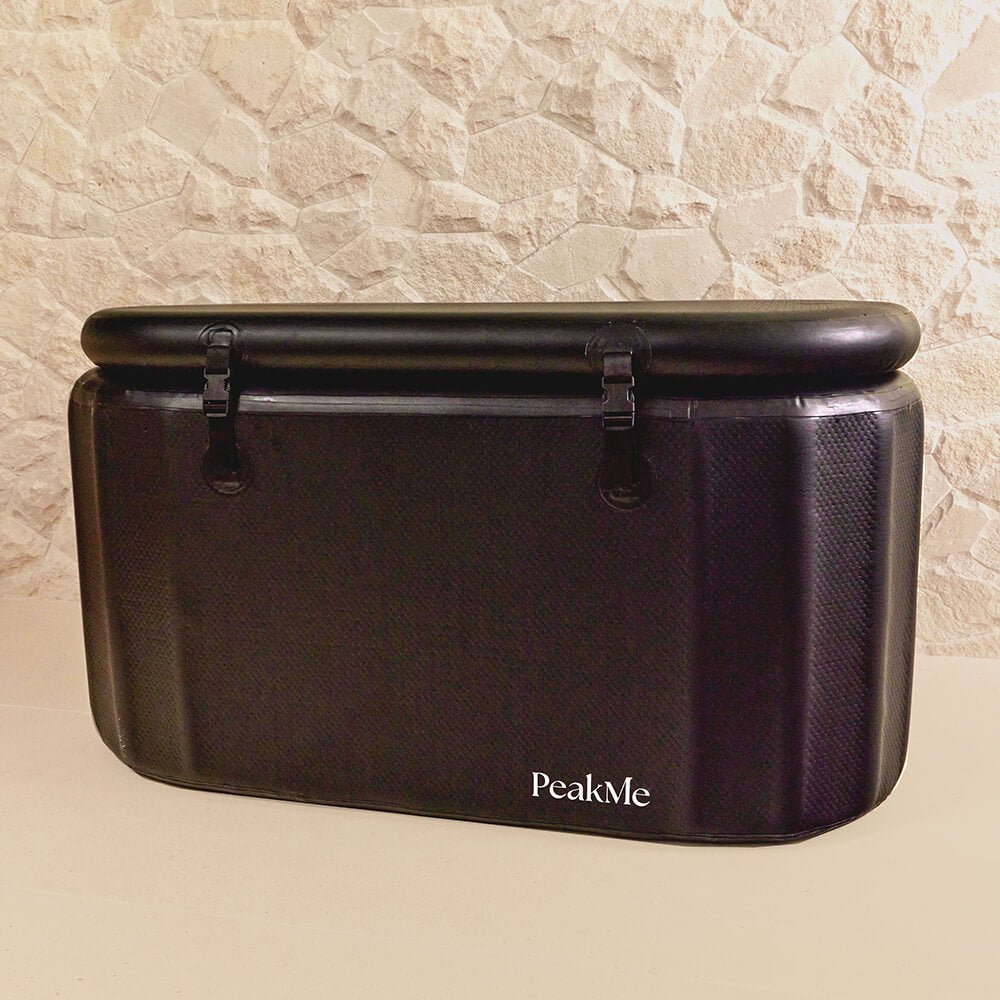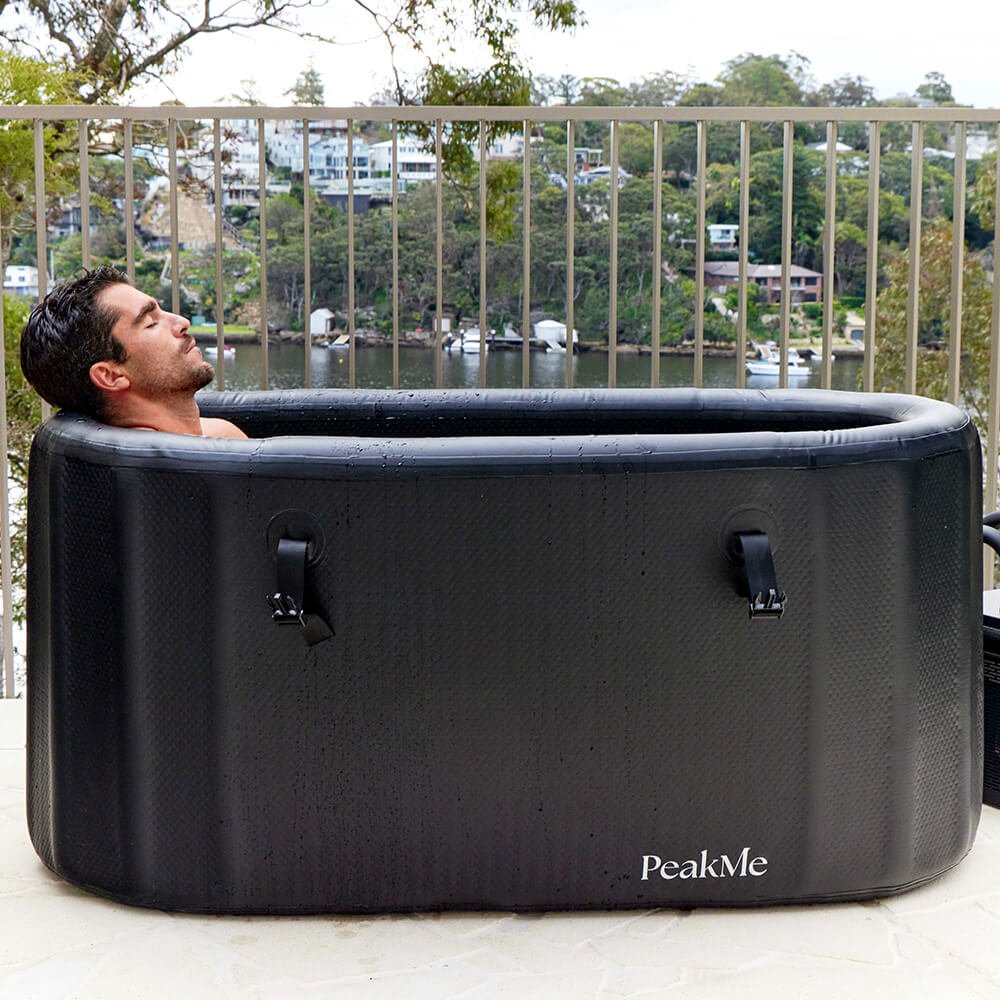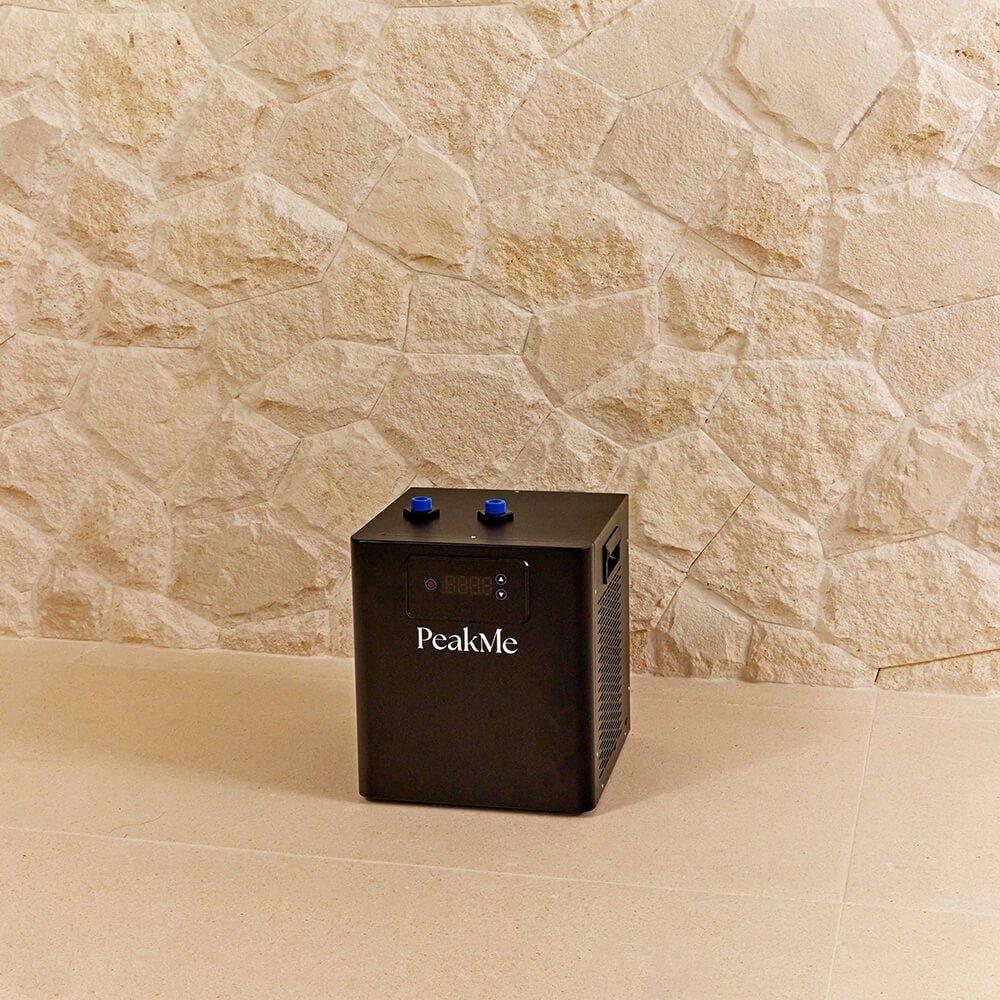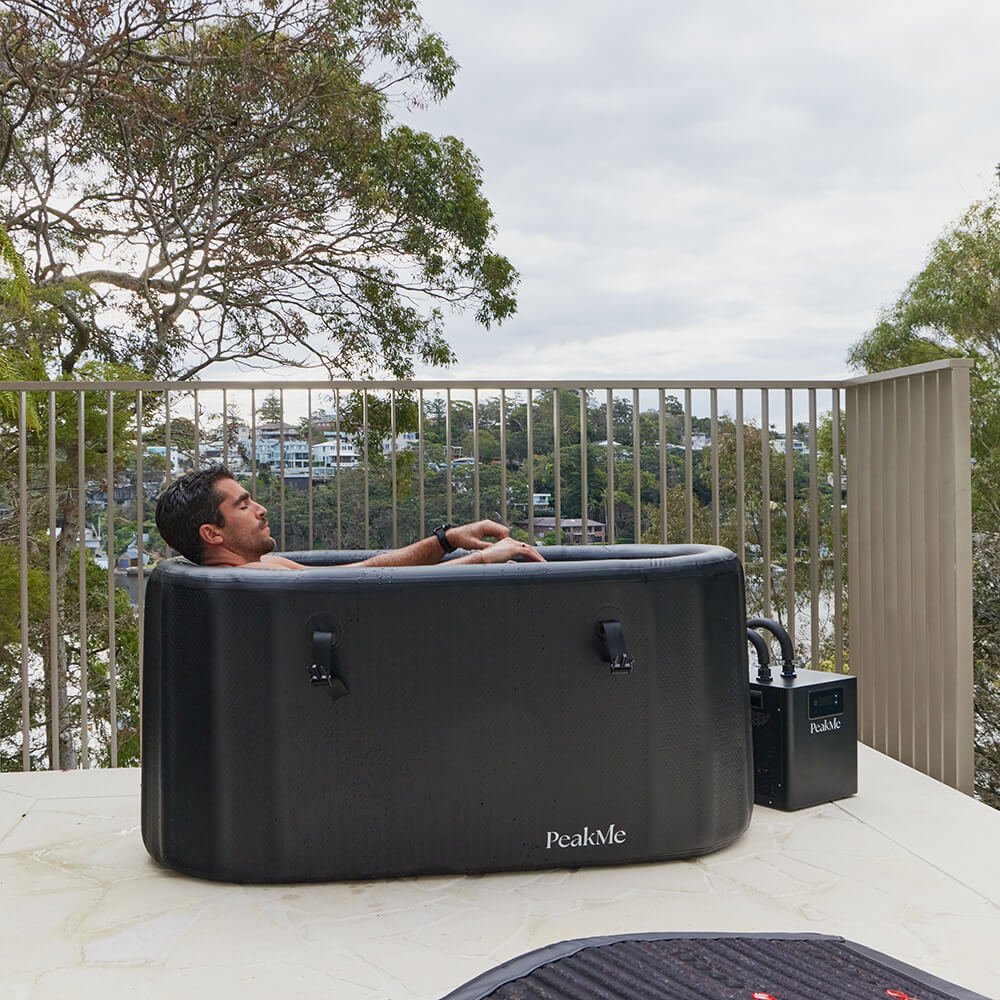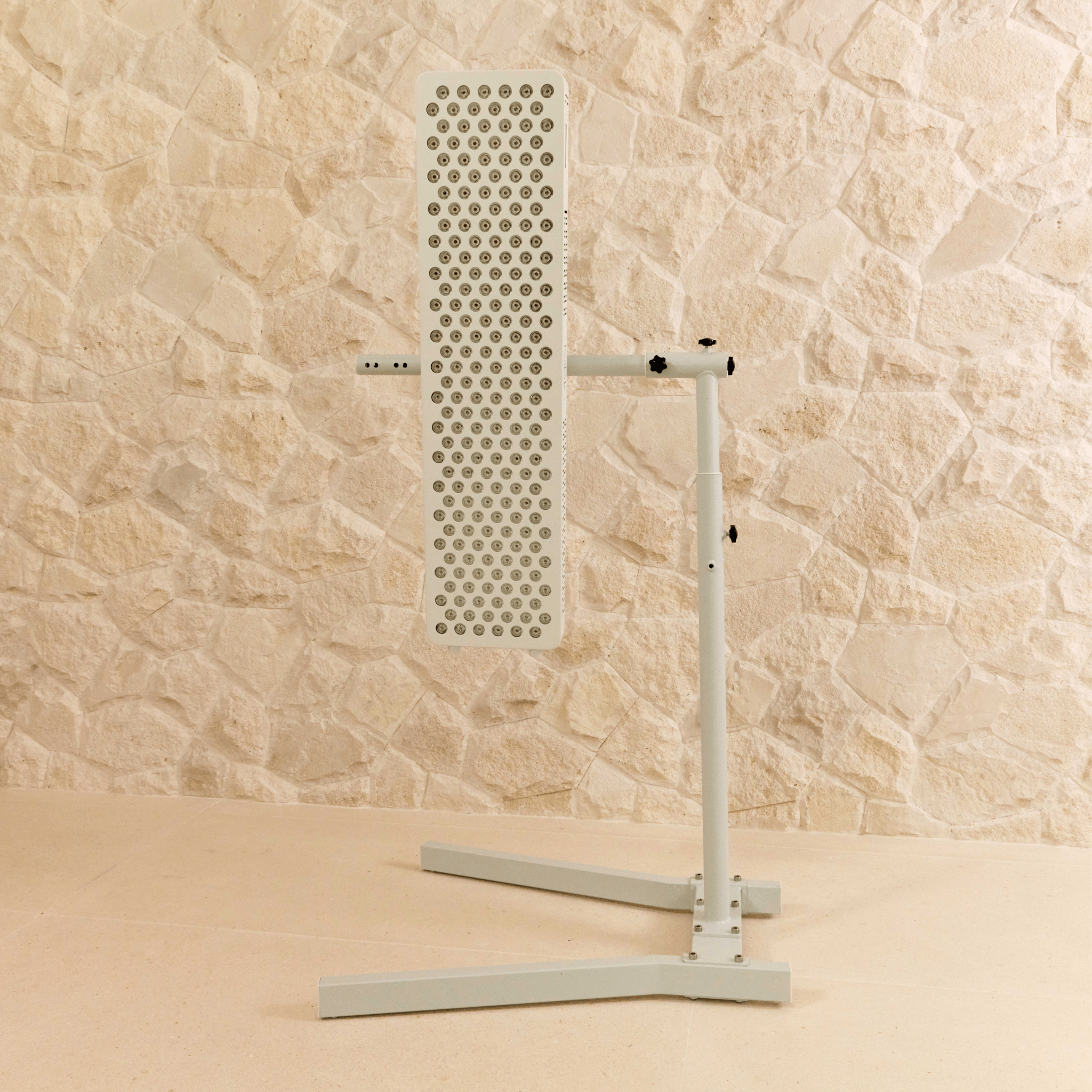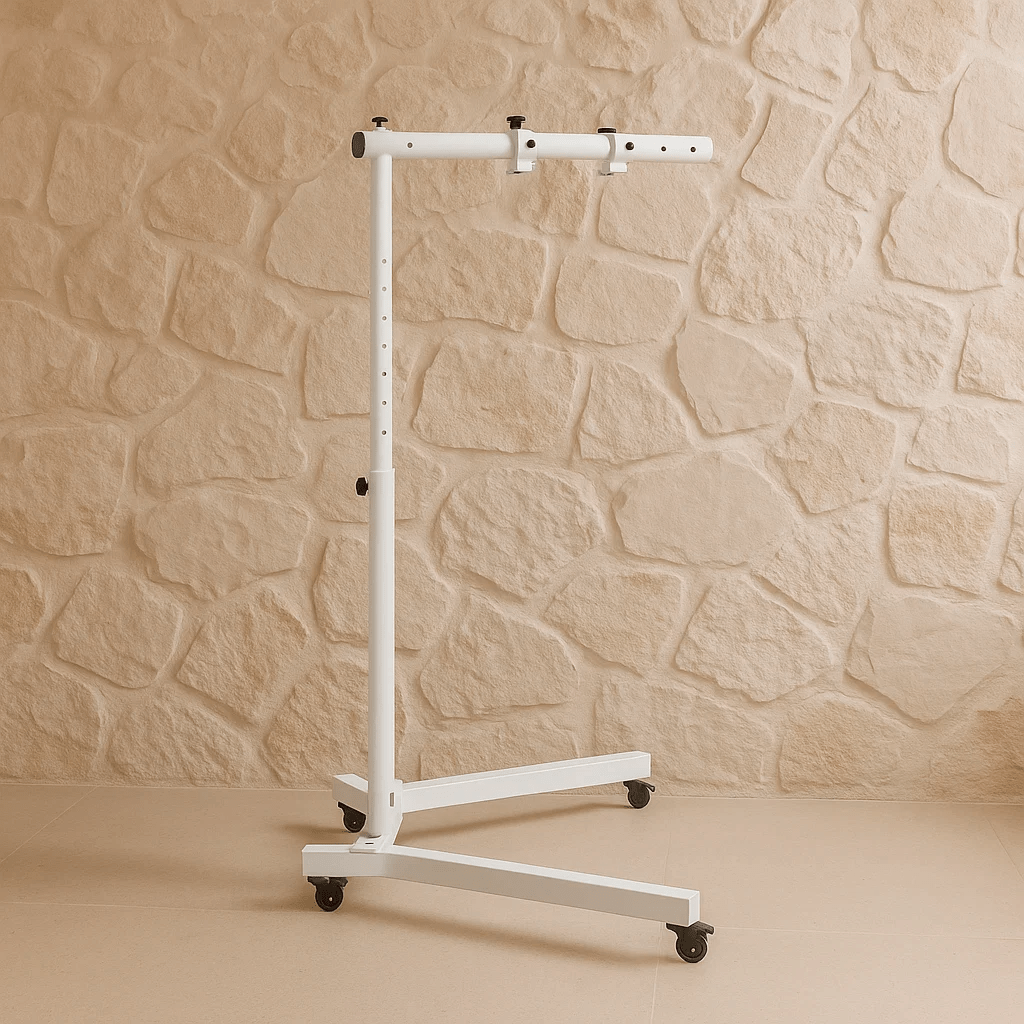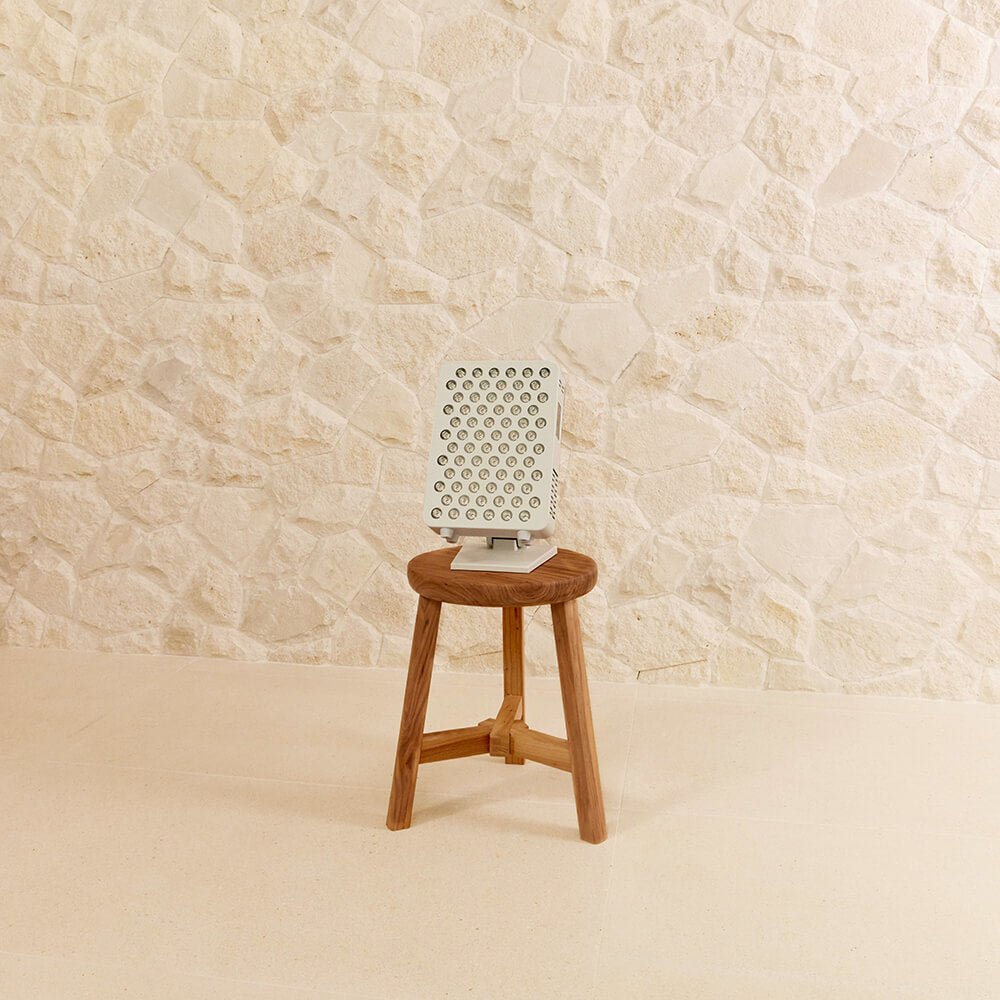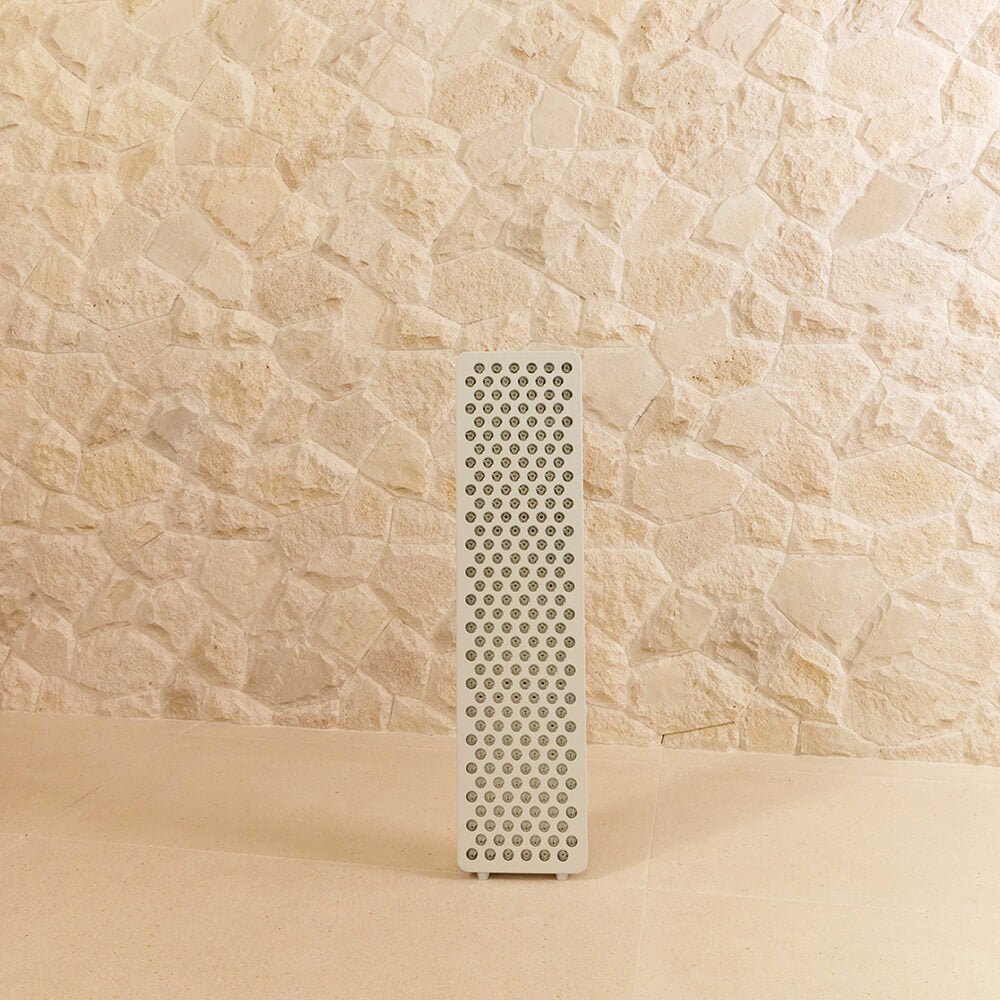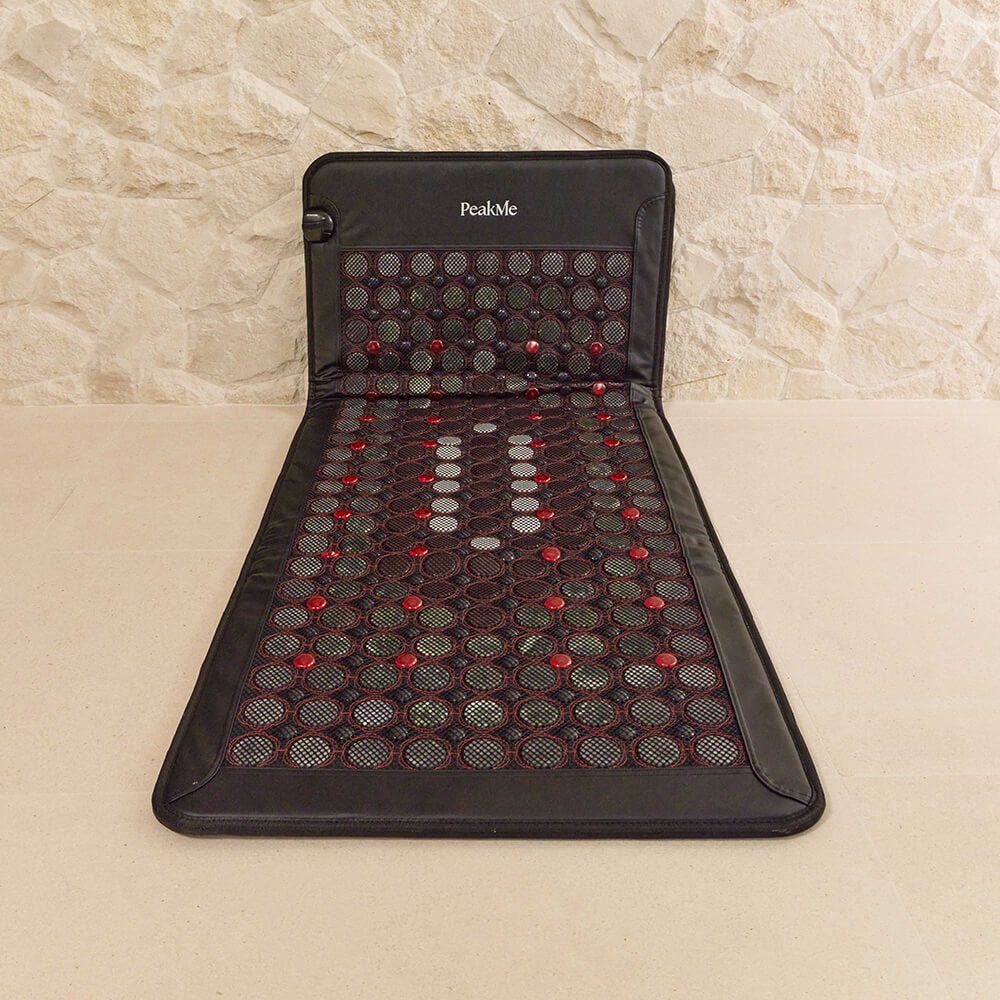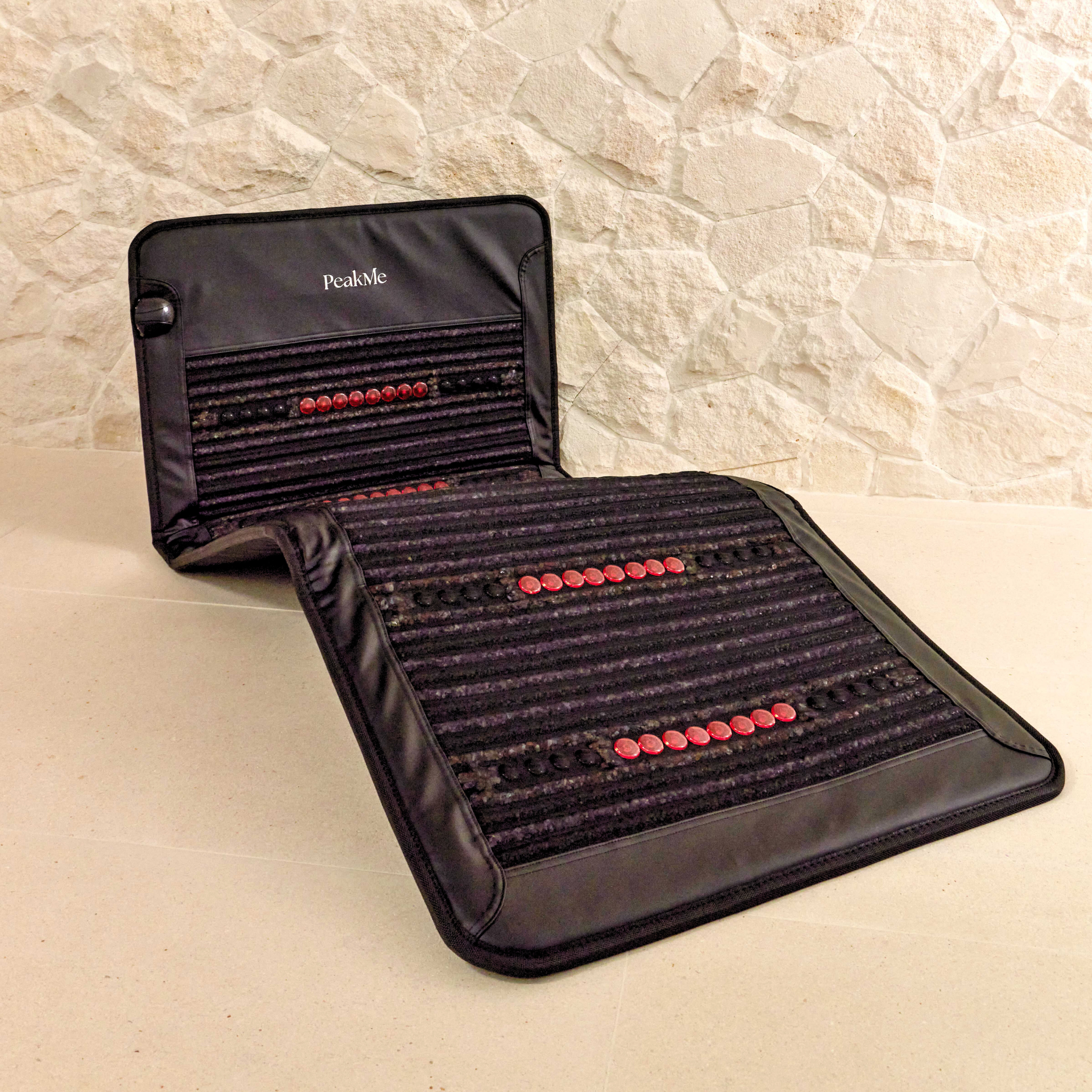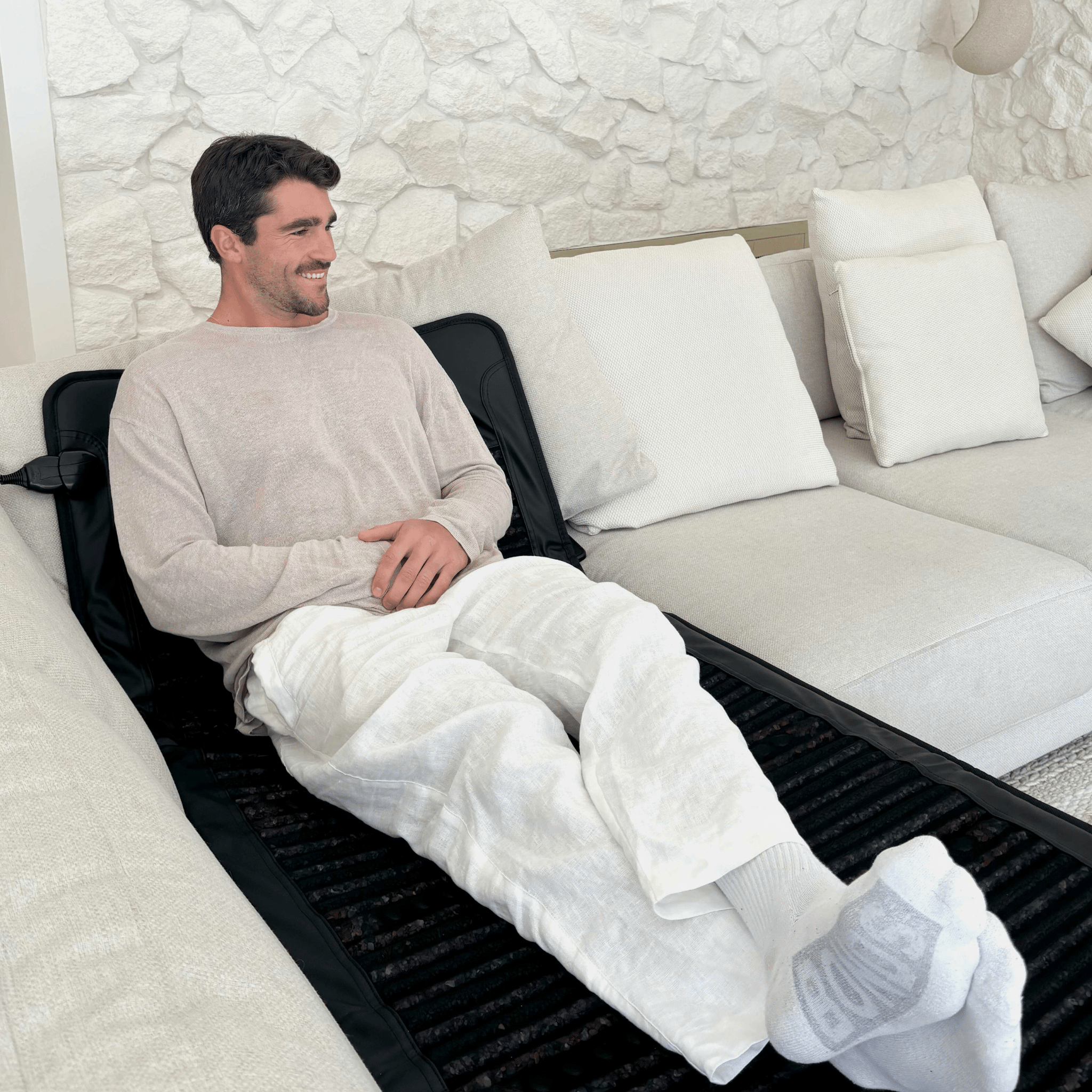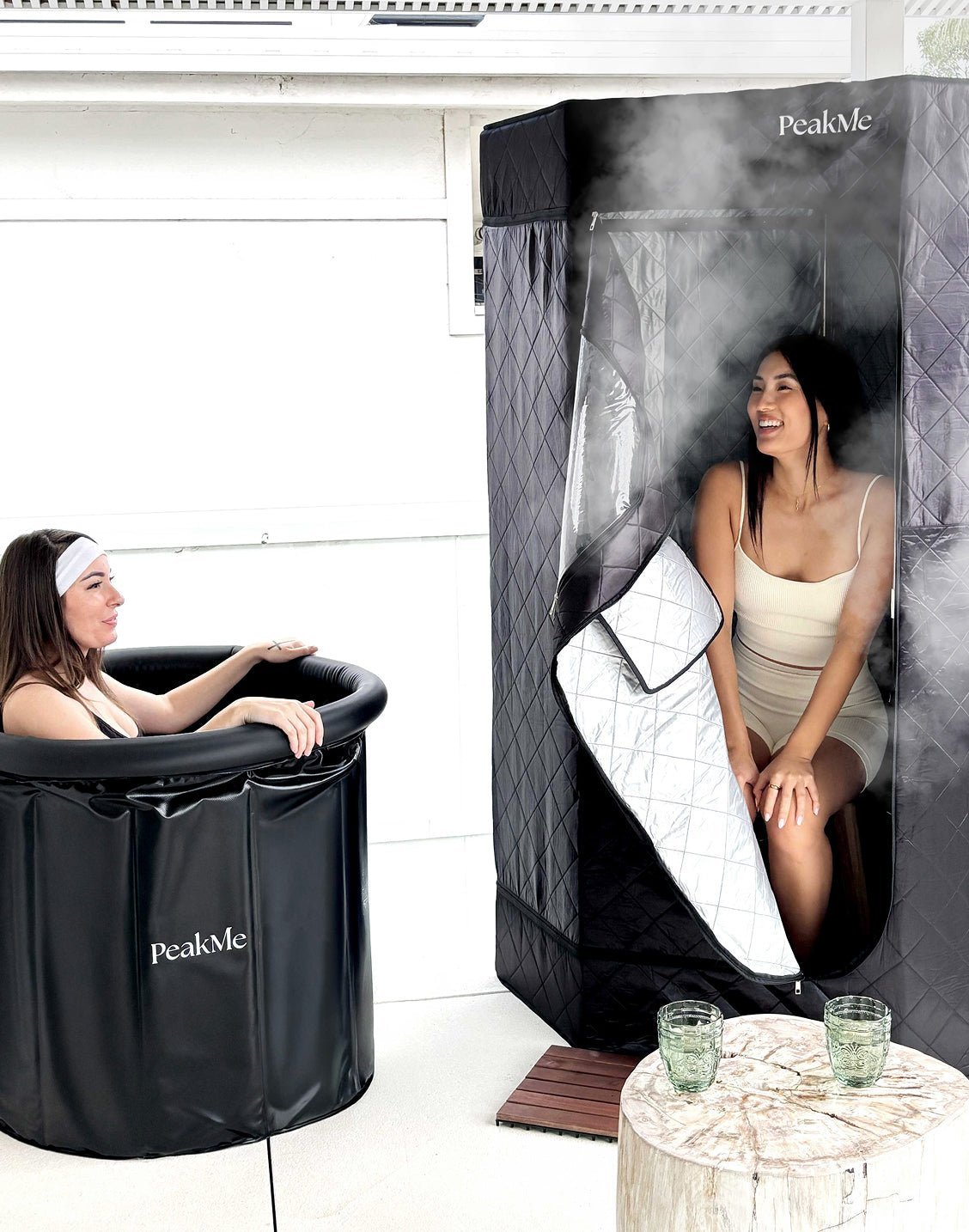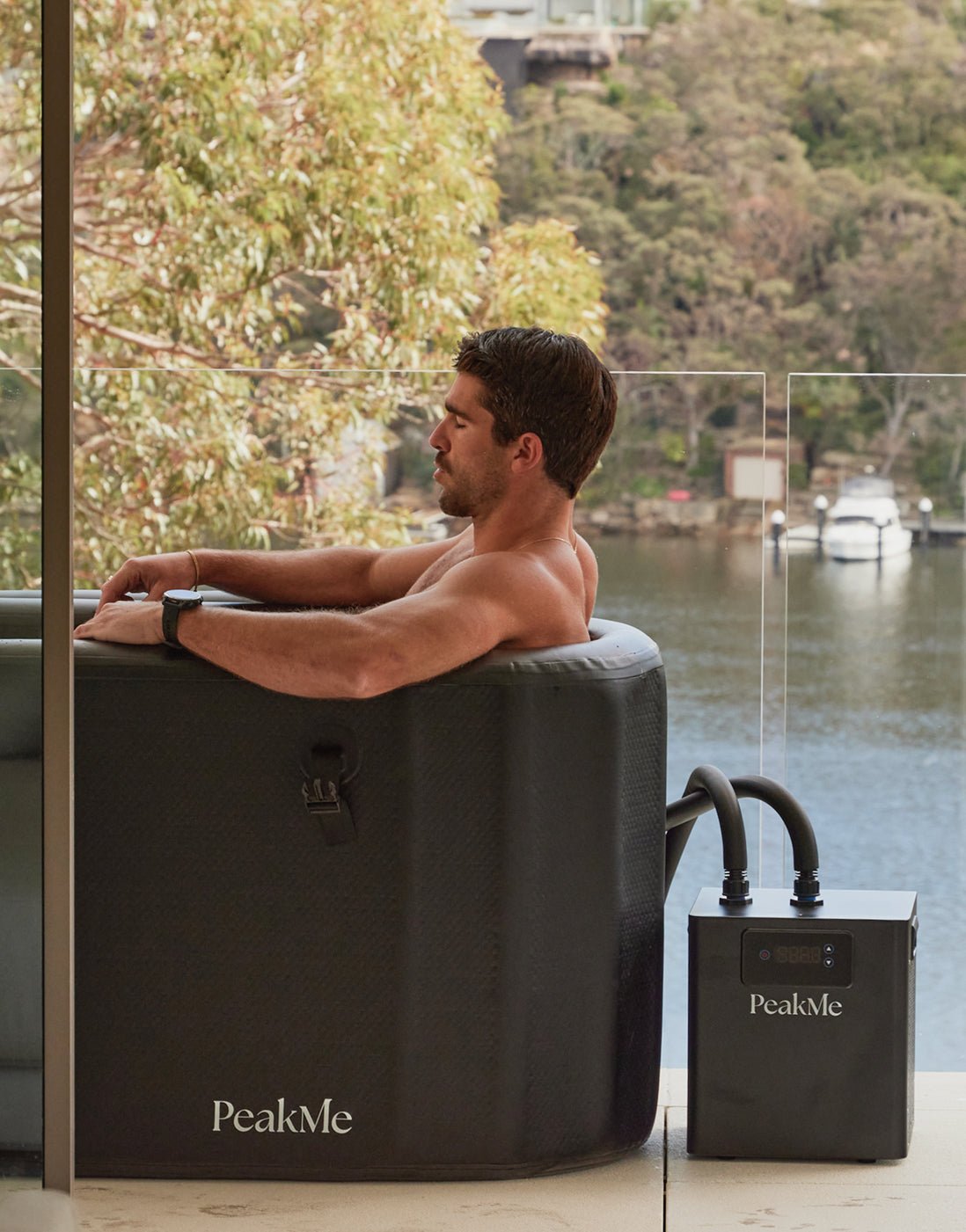Introducing cold therapy into your routine doesn’t need to be overwhelming. In fact, it might be the simplest thing you do all week, and the most powerful.
Backed by science and built for everyday use, the PeakMe Flow Ice Bath makes cold exposure easy, consistent and rewarding.
The Ritual That Resets You
There’s something deeply primal about plunging into cold water. It shocks the system, clears the mind, and kickstarts recovery. More importantly, it’s a small daily act that reshapes your mental and physical resilience from the inside out.
The benefits of cold therapy have been documented for centuries, from ancient Romans to Nordic bathers. But it’s only recently that science has begun catching up – validating the effects of cold water immersion on stress response, inflammation, and metabolic function¹.
Let’s break down how to bring this practice into your everyday life.
How to Use an Ice Bath in Your Daily Routine
-
Morning Energy Boost
The first hour of your day sets the rhythm. A short ice bath session in the morning triggers a natural surge in norepinephrine, a hormone linked to increased alertness, focus and mood². The cold wakes up your entire nervous system and gives you a clean mental slate before emails, meetings or the pull of social media.
Even a quick 2 to 3-minute plunge can shift your state. It’s not about staying in long – it’s about staying consistent.
Try this: Set your PeakMe Flow Ice Bath to around 10°C and dip in first thing after waking, before caffeine or screen time.
-
Post-Workout Recovery
After training, an ice bath helps lower core body temperature, flush out metabolic waste, and ease inflammation³. This reduces DOMS (delayed onset muscle soreness) and supports tissue repair.
If you’re lifting weights, running, or doing high-intensity work, a cold plunge can help you bounce back faster without overloading your system.
Try this: Use the PeakMe Flow at 4–8°C for 5–10 minutes after training. Pair it with hydration and gentle stretching for full-body reset.
-
Midday Focus Reset
Feeling foggy or drained by lunchtime? A cold plunge hits the reset button. It’s a natural way to shift out of autopilot and into presence. Studies show cold exposure increases dopamine levels by up to 250%, leading to longer-lasting improvements in mood and motivation⁴.
Try this: On a low-energy day, schedule a 3-minute midday plunge to shake off mental fatigue and bring your nervous system back online.
Tips to Build the Habit
-
Start warmer, not harder: Begin with temperatures around 12–15°C and gradually decrease. You don’t need to aim for freezing on day one.
-
Breathe through the resistance: Use slow, nasal breathing to calm your heart rate. The breath is your anchor.
-
Consistency beats intensity: 3–4 times per week is a great rhythm. It’s the routine, not the occasional challenge, that rewires your stress response⁵.
-
Track what shifts: Notice improvements in sleep, energy, focus and emotional regulation. Journaling helps.
Designed for Daily Life: Meet PeakMe Flow
The PeakMe Flow Portable Ice Bath was created to make cold immersion more accessible, sustainable and enjoyable. Unlike traditional tubs, it’s compact, durable, easy to clean and drain, and doesn’t require a big backyard or complicated setup.
Crafted for recovery, morning rituals and everything in between, it fits effortlessly into your lifestyle. All you need is water, ice and a few minutes to show up for yourself — the rest takes care of itself.
Curious about the science behind the practice? Start with our Complete Ice Bath Guide, or explore practical advice in The Ice Reset.
Join the Community
Wellness is better when it’s shared. For real stories, cold tips, and a community that backs you, come hang out with us at @peakme.au.
We’re building more than routines. We’re building resilience, together.
References
-
Bleakley, C. M., & Davison, G. W. (2010). What is the biochemical and physiological rationale for using cold-water immersion in sports recovery? A systematic review. British Journal of Sports Medicine, 44(3), 179–187. https://doi.org/10.1136/bjsm.2009.065565
-
Huttunen, P., Rintamäki, H., & Hirvonen, J. (2001). Effect of regular winter swimming on the activity of the sympathoadrenal system before and after a single cold water immersion. International Journal of Circumpolar Health, 60(3), 400–406. https://pubmed.ncbi.nlm.nih.gov/11590880/
-
Wilcock, I. M., Cronin, J. B., & Hing, W. A. (2006). Water immersion: Does it enhance recovery from exercise? International Journal of Sports Physiology and Performance, 1(3), 195–206. https://doi.org/10.1123/ijspp.1.3.195
-
Søberg, S., et al. (2021). Human physiological responses to cold exposure: Acute and adaptive responses. Cell Reports Medicine, 2(9), 100447. https://pubmed.ncbi.nlm.nih.gov/26924539/
-
Leppäluoto, J., Westerlund, T., Huttunen, P., et al. (2008). Effects of long-term whole-body cold exposures on plasma concentrations of ACTH, beta-endorphin, cortisol, catecholamines and cytokines in healthy females. Scandinavian Journal of Clinical and Laboratory Investigation, 68(2), 145–153. https://pubmed.ncbi.nlm.nih.gov/18382932/


